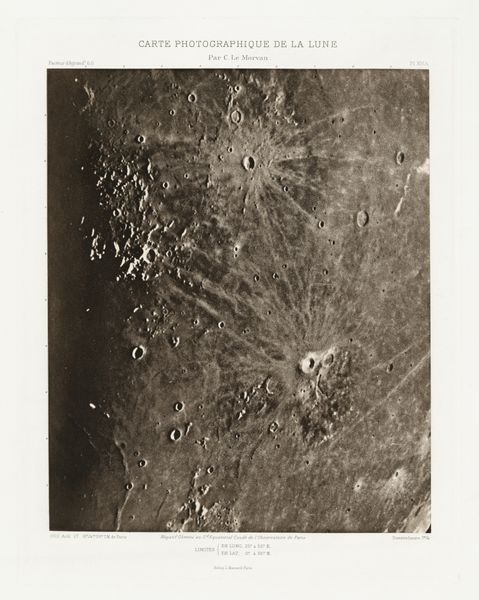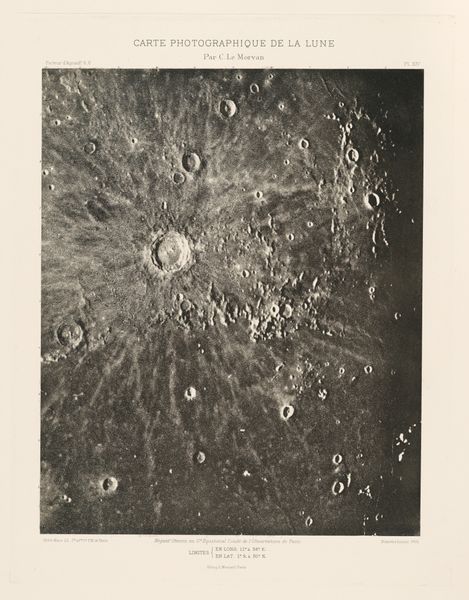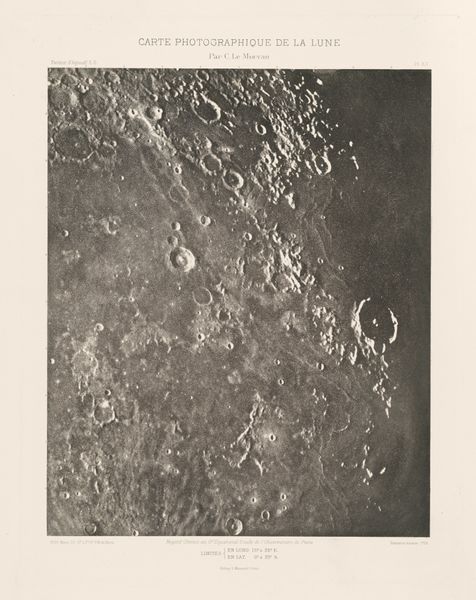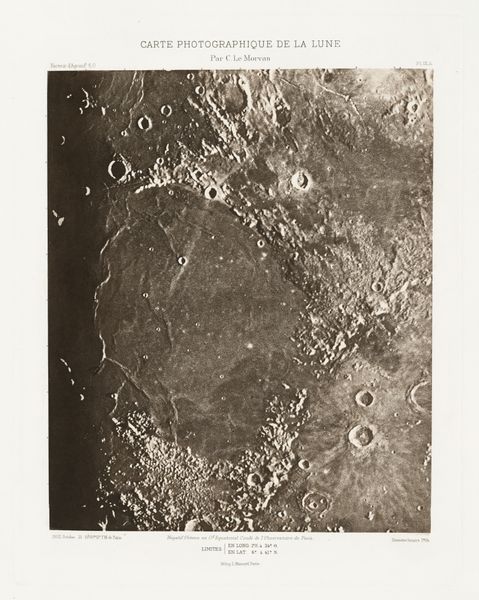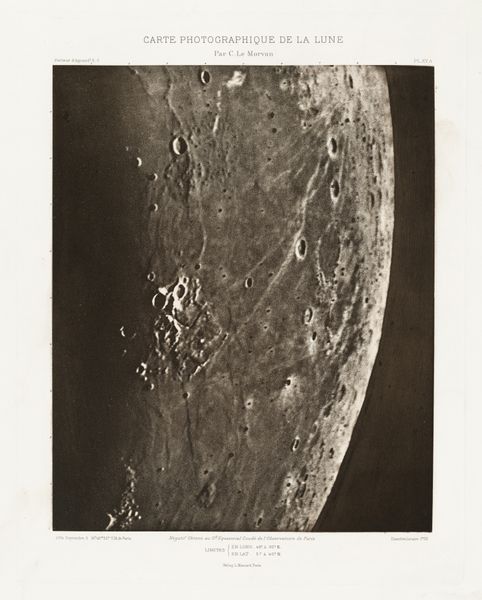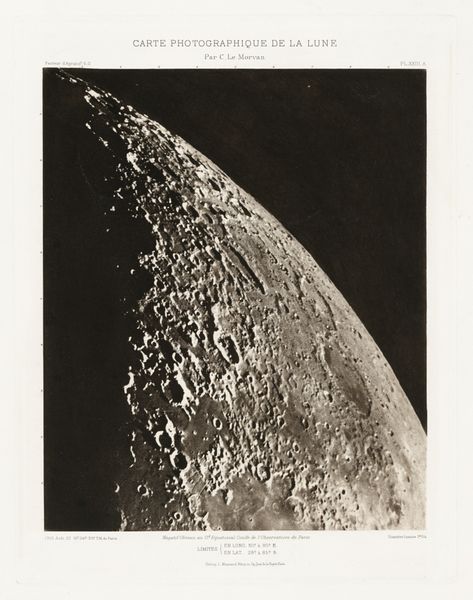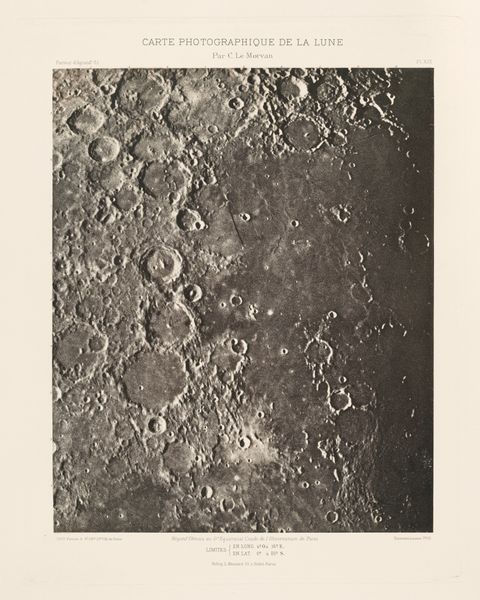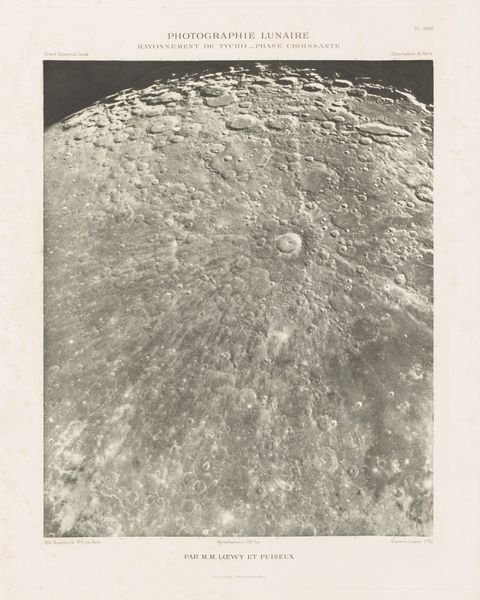
Carte photographique de la lune, planche XV (Photographic Chart of the Moon, plate XV) Possibly 1904 - 1914
0:00
0:00
print, photography, gelatin-silver-print
# print
#
landscape
#
photography
#
gelatin-silver-print
#
realism
Dimensions: image: 31.1 × 25.5 cm (12 1/4 × 10 1/16 in.) plate: 38.9 × 29.5 cm (15 5/16 × 11 5/8 in.) sheet: 49 × 37.9 cm (19 5/16 × 14 15/16 in.) tissue: 42.55 × 37.47 cm (16 3/4 × 14 3/4 in.)
Copyright: National Gallery of Art: CC0 1.0
Charles Le Morvan made this photographic chart of the moon, using what I imagine was state-of-the-art equipment, and a hell of a lot of patience. The results are these ghostly greys, shimmering like a mirage on the surface, as if the moon itself is a canvas. Looking at this image, I'm drawn to the way the light plays across the craters. The texture feels almost tactile, even though it's a photograph. You can sense the density of the rock, the sharp edges of the formations. There's a real drama in the contrast between the illuminated peaks and the deep shadows. Take the crater at the top left, it looks like some primordial soup, bubbling away billions of years ago. In a way, this photo reminds me of some of Vija Celmins' depictions of the night sky. Both artists share a similar eye for detail, and a fascination with the subtle gradations of tone and texture. Just as they suggest the act of looking is as important as knowing.
Comments
No comments
Be the first to comment and join the conversation on the ultimate creative platform.
